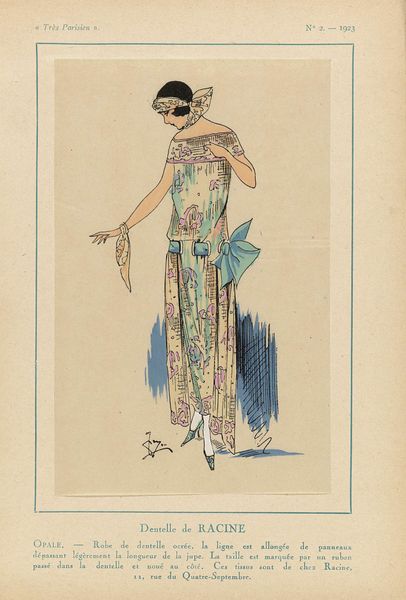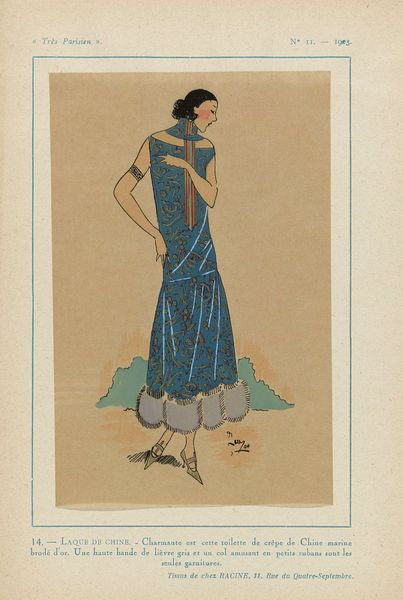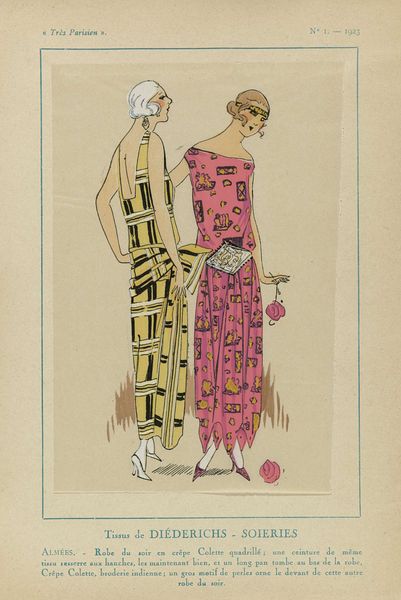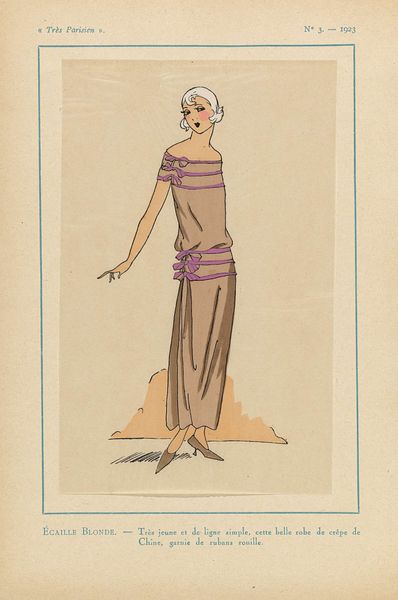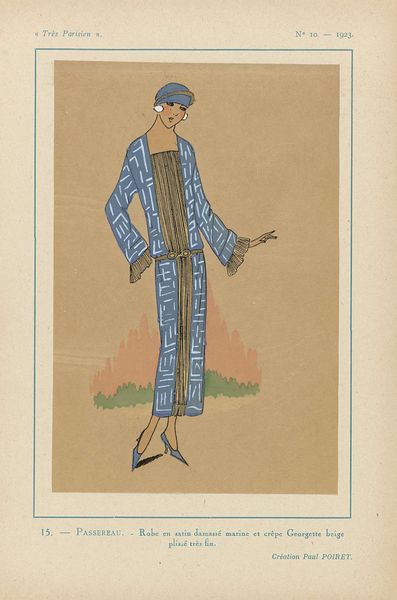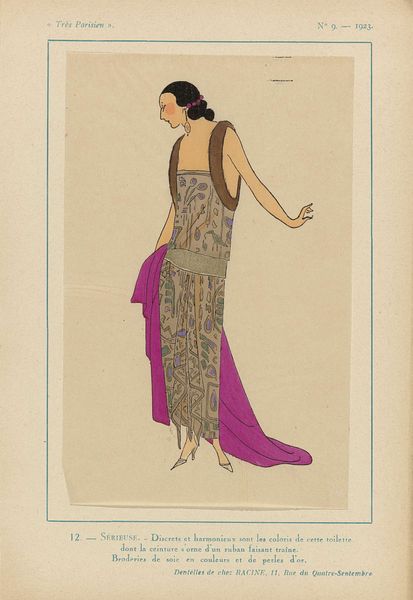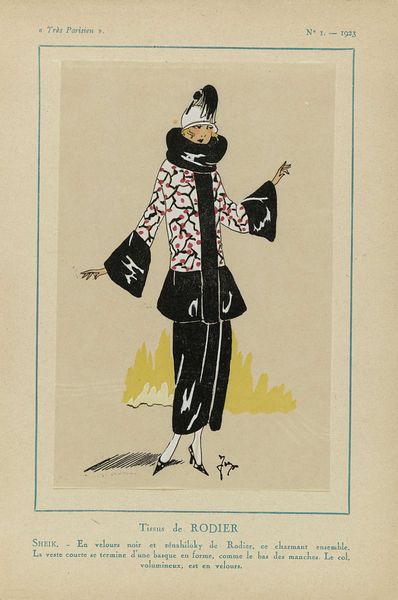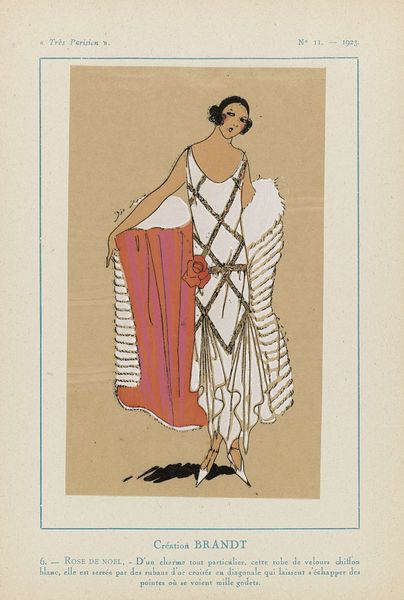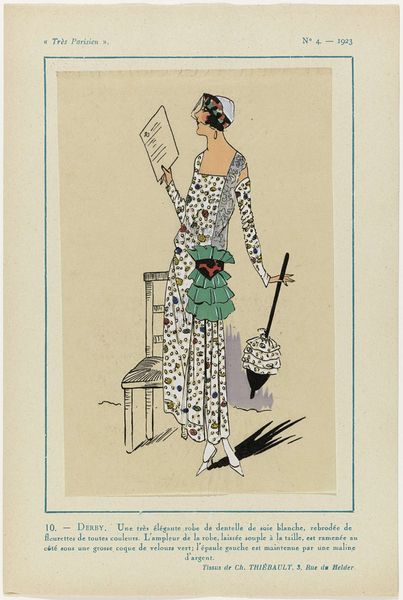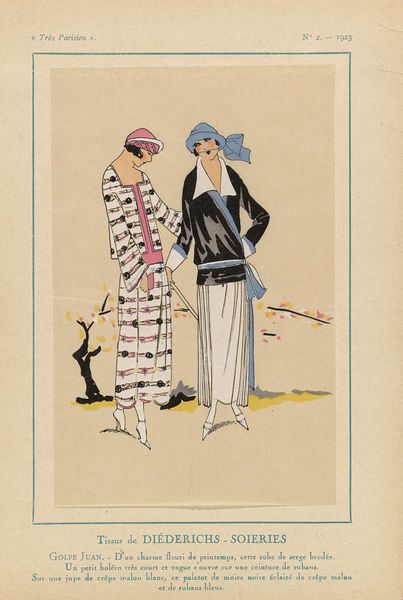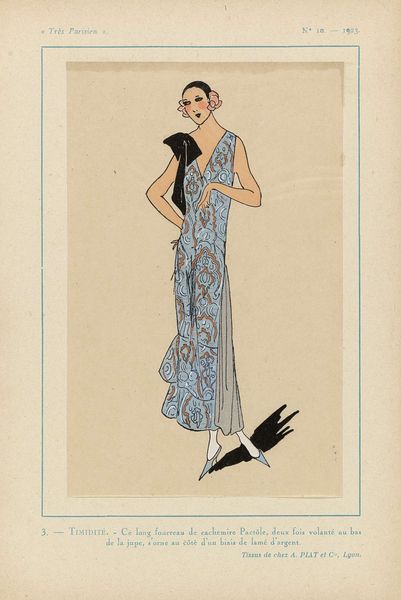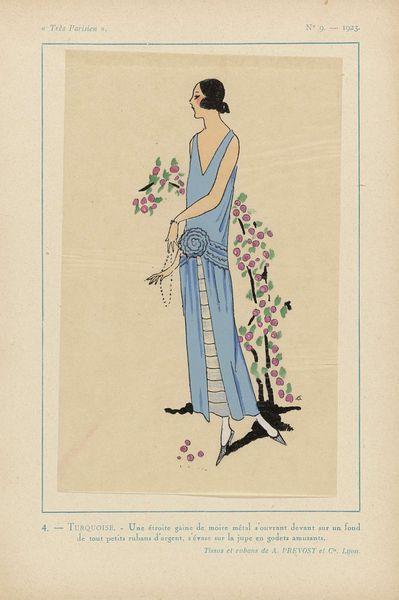
Très Parisien, 1923, No. 2: Tissus de chez MATHIEU...Fantaisie Orientale 1923
0:00
0:00
drawing, print, paper
#
art-deco
#
drawing
# print
#
paper
#
historical fashion
#
decorative-art
Dimensions: height 269 mm, width 180 mm
Copyright: Rijks Museum: Open Domain
Curator: Before us is "Trés Parisien, 1923, No. 2: Tissus de chez MATHIEU...Fantaisie Orientale", a print drawing created by G-P. Joumard, currently held in the Rijksmuseum collection. Editor: My immediate reaction? It's a playful yet sophisticated study in contrasts. The textures jump out—matte paper versus the implied sheen of the fabrics. Curator: Precisely! Let's consider the interplay of line and color. The bold outlines defining the figure are countered by the soft washes of color, characteristic of Art Deco illustration. Note how the diagonal stripes of the top draw the eye upward. Editor: And what about the historical context? This was published in 1923. Fashion illustrations like these reflected and shaped Parisian style at the time. "Oriental fantasy" tapped into popular fascination with exoticism during the interwar years. We see it manifest with that blindfold headwear. Curator: Absolutely. Joumard employs what we could term 'soft constructivism,' arranging geometric forms to suggest a sense of movement and dynamism despite the flat picture plane. This interplay underscores the tension between representation and abstraction so fundamental to Art Deco. Editor: Also, think of where it might have been consumed, initially. Was it aimed at tailors, wealthy clients, or pattern-makers who had to reproduce these items? This helps us think about who participated in shaping fashion’s social and visual appeal during this period. Curator: Good point. One might ponder about its visual relationship between print as commodity versus art object, how the clean lines convey a modernist, forward-looking vision, while elements like the elaborate bows gesture to older, more ornate traditions. Editor: Indeed, analyzing the artwork in this context is enlightening. Considering how an elite fantasy around othered cultures fed Western design helps illuminate deeper aesthetic structures and values from the period. Curator: In closing, examining Joumard's piece reveals how stylistic tensions reveal something lasting, with elements of Art Deco and Orientalist aesthetic codes that have persisted and mutated. Editor: To further explore these ideas with artwork, please find the list of suggested stops related to textiles, fashion and early modernism on your audio guide.
Comments
No comments
Be the first to comment and join the conversation on the ultimate creative platform.
